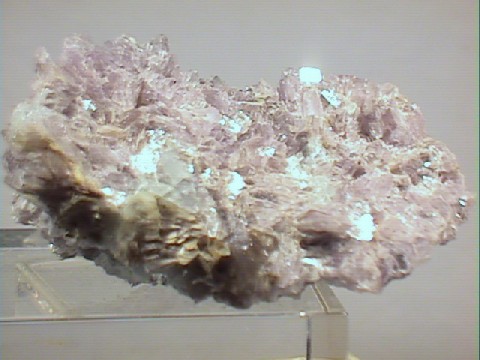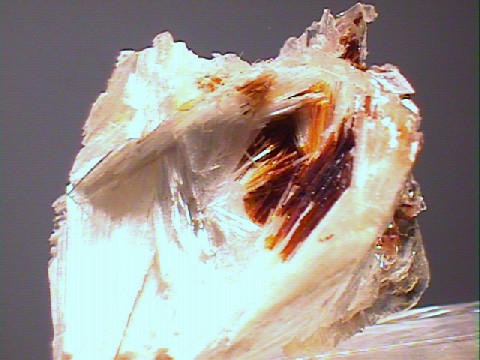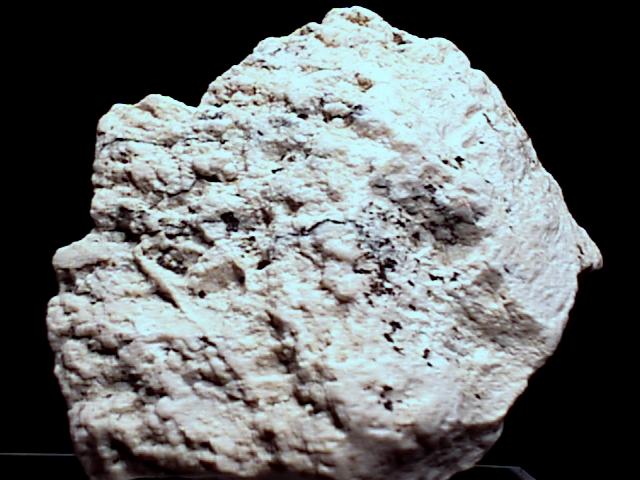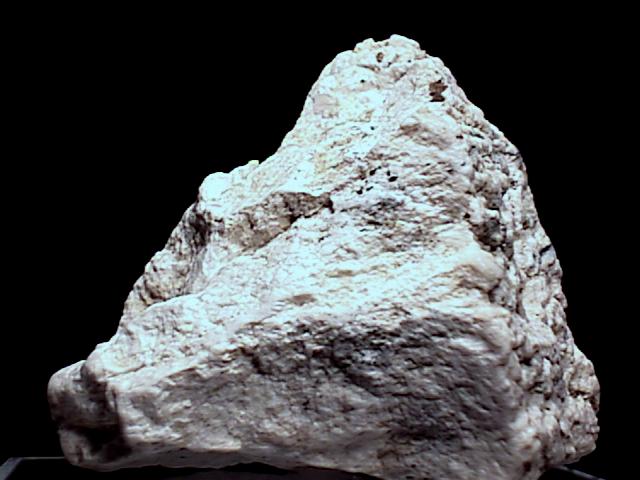 THE MINERAL POLYLITHIONITE
THE MINERAL POLYLITHIONITE
- Chemistry: KLi2AlSi4O10F2, Potassium Lithium Aluminum Silicate Fluoride.
- Class: Silicates
- Subclass: Phyllosilicates
- Group: Micas
- Division: True Micas
- Uses: Only as mineral specimens.
Specimens
Polylithionite is certainly not one of the more well know mica minerals. It is a true mica closely related to other lithium rich micas; lepidolite and tainiolite. Polylithionite, like other micas, has a layered structure of lithium aluminum silicate sheets weakly bonded together by layers of potassium ions. These potassium ion layers produce the perfect cleavage. Polylithionite's rarity, associations with other rare minerals, attractive color and fluorescent color and crystal habit make it an ideal collection mineral.
PHYSICAL CHARACTERISTICS:
- Color is colorless, white, bluish, greenish, yellow, brown, pink, silvery to pearly white.
- Luster is pearly to waxy.
- Transparency crystals are transparent to translucent.
- Crystal System is monoclinic; 2/m
- Crystal Habits include pseudohexagonal tabular to platy crystals forming "books" and rosettes.
- Cleavage is perfect in one direction producing thin sheets or flakes.
- Fracture is not readily observed due to cleavage but is uneven.
- Hardness is 2 - 3.
- Specific Gravity is approximately 2.6 - 2.8 (average)
- Streak is white.
- Other Characteristics: Specimens are fluorecent lemon yellow under shortwave UV light.
- Associated Minerals are many and include
catapleiite,
ilmenite,
behoite , titanite, aragonite, eudialyte,leucosphenite , fluorite, willemite, apophyllite, rhodochrosite,steacyite , leifite, sodalite, pyrochlore, calcite, sugilite, microcline, axinite, manganbabingtonite, galena,ancylite , natrolite, serandite, hilairite,sheldrickite andcalcioancylite . - Notable Occurrences include the type locality of Kangerdluarsuk, Ilimaussaq alkaline complex, Greenland as well as Langesundsfjord, Norway; Varutrask, Sweden; Washington Pass, Okanogan County, Washington; Landsman Camp, Graham County, Arizona and Point of Rocks, New Mexico, USA; Dara-i-Poiz Massif, Tadzhikistan and of course Mont Saint-Hilaire, Quebec, Canada.
- Best Field Indicators are crystal habit, fluorescence, color, cleavage, locality and associations.









